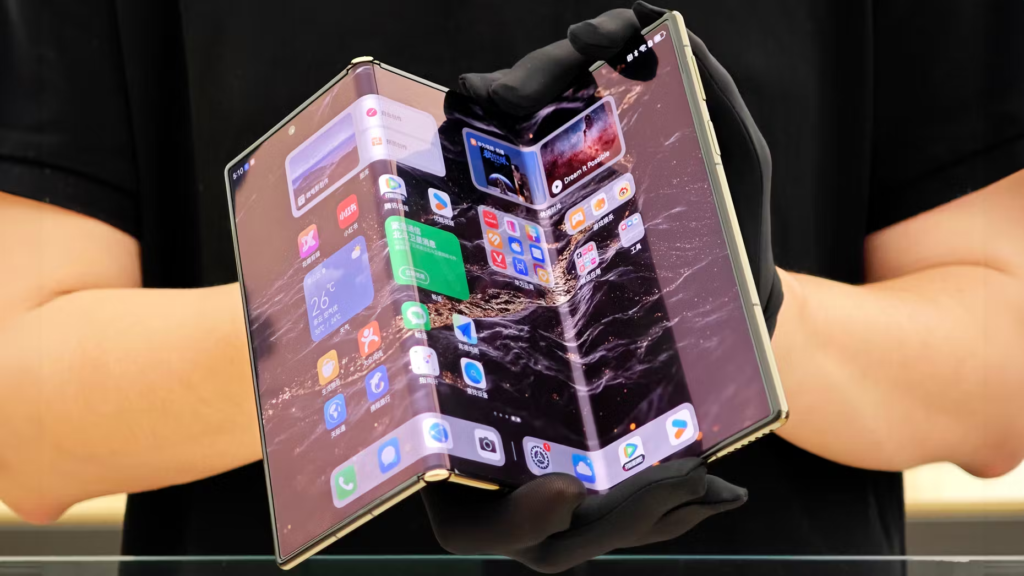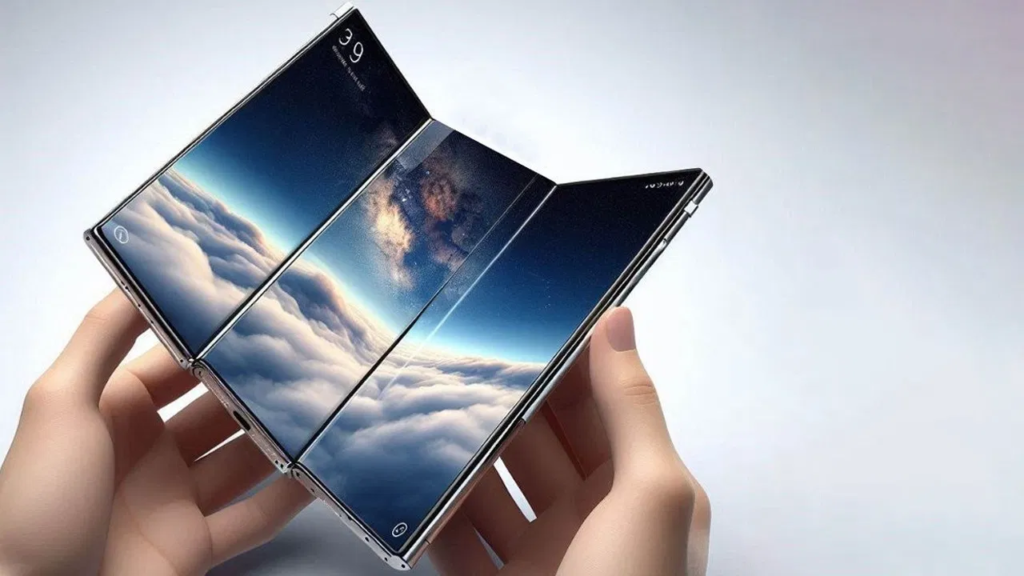Huawei has taken the foldable phone market by storm with the launch of the Mate XT, the world’s first-ever tri-fold phone. Unlike its predecessors in the foldable category, the Mate XT features a unique design that folds at two points, offering three separate screen sections. This allows users to experience three distinct form factors: a regular smartphone size, a larger screen for multitasking, and a full 10.2-inch display for immersive experiences.
Please follow us on Facebook and Twitter.
Huawei Mate XT has set a new benchmark in folding technology by combining elegance, sturdiness, and innovative design into a device that is not just a concept but available for purchase. However, the tri-fold wonder is currently only being sold in China, with reports hinting at an international release early next year. With a price tag of approximately $2,800, the device may appeal only to a niche market for now.

Why a Tri-Fold Phone?
The most prominent question on everyone’s mind when hearing about the Mate XT is, “Why would someone need a tri-fold phone?” The answer lies in the aspect ratios. Traditional foldable phones like the Galaxy Z Fold 6 or Pixel 9 Pro Fold fail to offer extra horizontal screen space, making the Mate XT an appealing option for those looking for more screen real estate.
With a resolution of 2232 x 3184 and a 16:11 aspect ratio, the Mate XT provides a near-cinematic viewing experience, making it ideal for streaming video content. Users can open the device at varying levels, creating three different screen configurations (ideal for everything from day-to-day tasks to watching TV shows, reading e-books, and multitasking).
One downside, however, is that the software has not yet caught up with the hardware. While it seems intuitive that users should be able to lock three apps simultaneously across the different screen sections, Huawei currently limits this to two apps, with a third floating window. This feature gap leaves room for future improvements, potentially mirroring multi-tasking capabilities seen in devices like the OnePlus Open.
A Surprisingly Sturdy Device
What truly sets the Mate XT apart from previous foldables is how sturdy it feels. First-generation foldable phones were notorious for their fragility, but the Mate XT feels durable, even with its additional hinge. Each of the two hinges is built to last, and one even locks securely into place using a built-in magnet. Users can position the screen at various angles, and the device holds firmly in place.
When opened, the Mate XT is impressively thin at just 3.6mm, making it the thinnest foldable device to date. When closed, it’s about the same thickness as the Galaxy Z Fold 6, despite the additional hardware. While it is heavier than most smartphones, weighing 300g, it feels light for a 10-inch tablet.
Still, the Mate XT’s durability has some question marks. While the device feels tough, it lacks an IP rating (meaning its resistance to water or dust remains untested). Huawei also includes a case with the phone, though it only covers one of the three screen sections and doesn’t seem particularly robust. The kickstand, meant to prop up the phone, struggles to keep the device stable when fully open.

Concept No Longer: A Real, Sturdy Tri-Fold Phone
Huawei has spent years refining its foldable technology, and the Mate XT is a culmination of those efforts. Unlike previous concept phones, the XT is a mass-produced, real-world device that consumers can buy. The folding smartphone market has matured significantly since its early days, and Huawei’s Mate XT feels like a finished product rather than a prototype.
That said, the Mate XT is not without its risks. Priced at $2,800, it is vulnerable to drops and damage, especially without a proper protective case. Still, this risk is not unique to the Mate XT (foldable phones), in general, have always been more fragile than standard smartphones. The Mate XT represents a major leap forward in folding technology. While it is currently only available in China, this breakthrough design is likely to prompt other manufacturers like Google and Samsung to explore their versions of tri-fold phones. As foldables continue to evolve, Huawei’s Mate XT serves as a clear reminder that innovation in smartphone design is far from over. The device’s sleek form factor, surprisingly solid build, and three-in-one design demonstrate the potential of foldables to keep pushing boundaries in the years to come.





